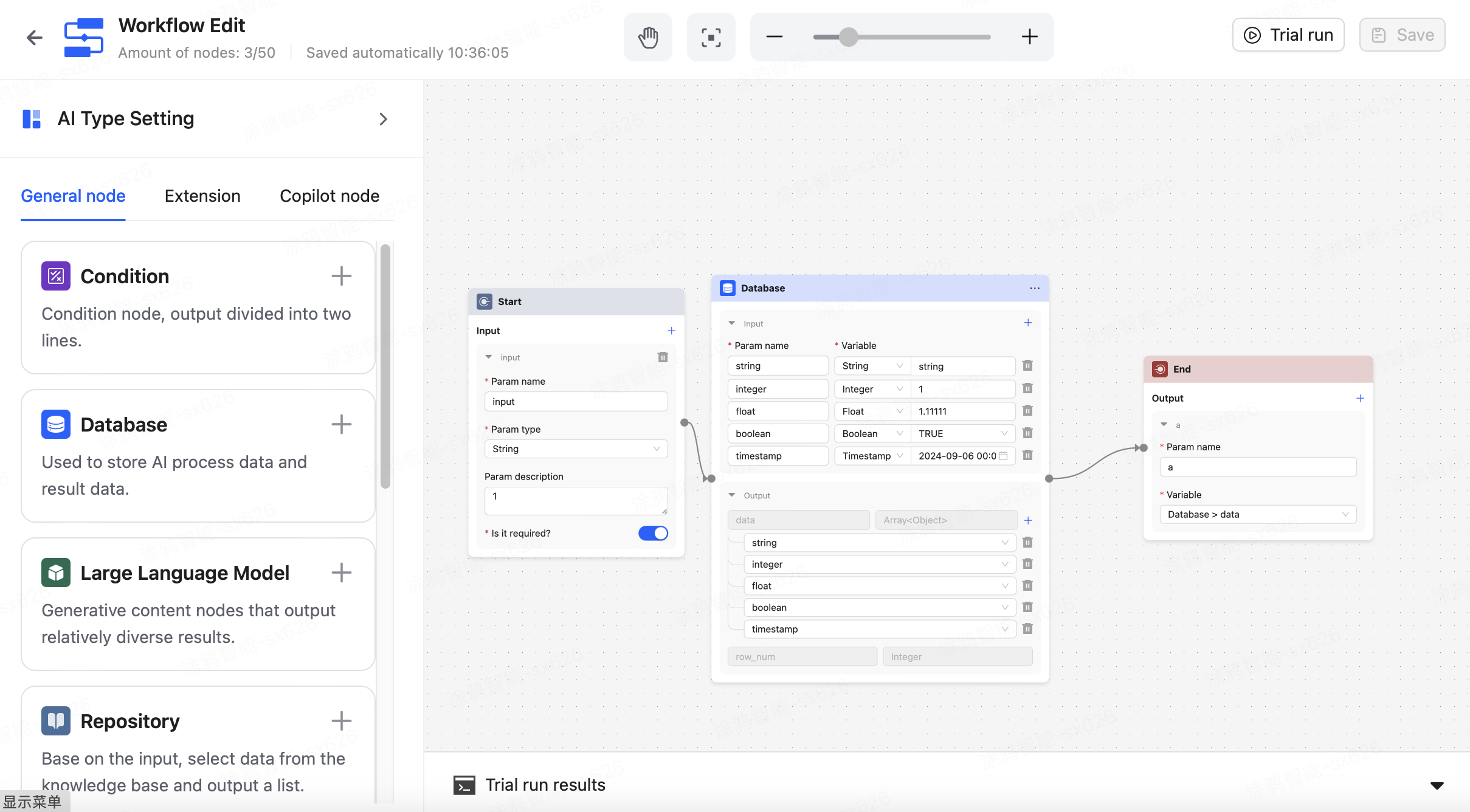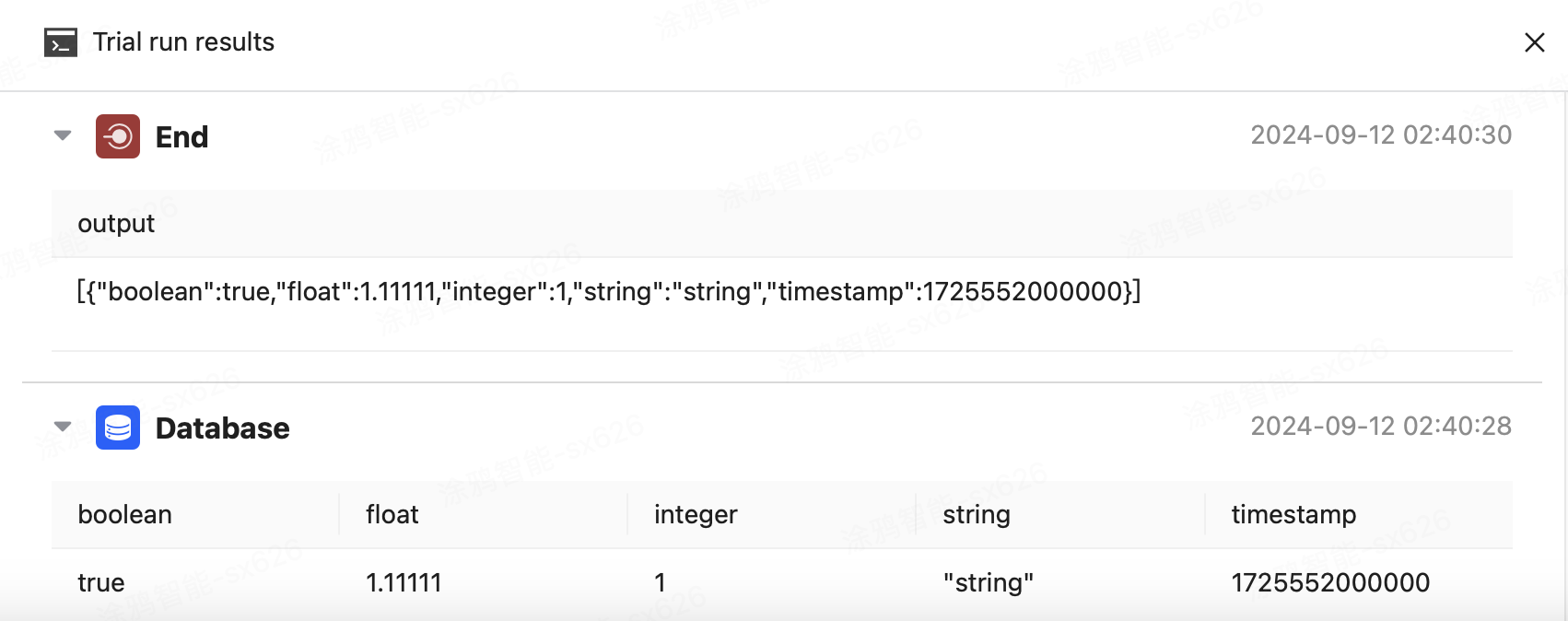4.2. List
A list is a data structure used to store an ordered collection of elements, widely used in various programming and data management tasks.
Common List Formats
- One-dimensional list (single-layer list) example: [1, 2, 3, 4, 5], contains a single level of elements, all elements are at the same level.
- Two-dimensional list (nested list) example: [[1, 2], [3, 4], [5, 6]], each element in the list is itself a list, forming a matrix or table structure.
- List of dictionaries, example: [{"name": "Alice", "age": 30}, {"name": "Bob", "age": 25}], each element in the list is a dictionary, commonly used to store structured data, such as database records.
- Dictionary of lists, example: {"fruits": ["apple", "banana"], "vegetables": ["carrot", "spinach"]}, the values of the dictionary are lists, commonly used for categorizing stored data.

In this example, the data structure output by the database belongs to the list of dictionaries.
